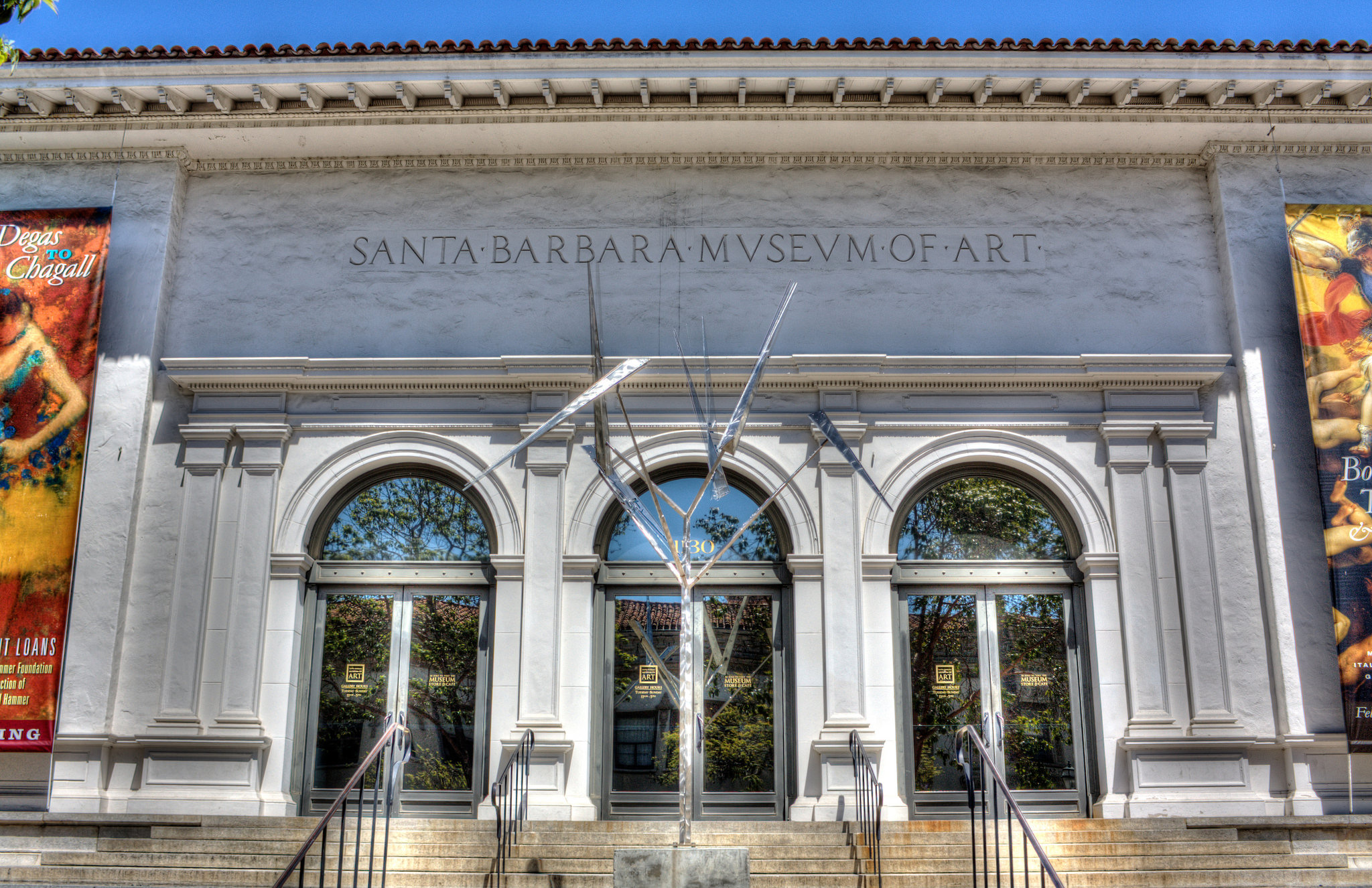The Santa Barbara Museum of Art introduces visitors to a wide range of different works created by past and contemporary artists from around the world. Through its programs, the museum endeavors to introduce people to the world of art and teach them about various styles, time periods, and media. The museum’s programs range from organized trips around the world to in-depth exhibitions of the works of single artists, such as the recent exhibit focused on Hungarian Bauhaus artist Laszlo Moholy-Nagy.
Since its establishment, the Santa Barbara Museum of Art has strived to offer educators and students in the city access to arts education and curricula. Recently, the museum undertook a renovation project that will expand galleries and also improve classrooms for school groups. In the meantime, the museum has created a wide range of resources for teachers seeking to introduce their students to art. Admission to the museum is free for all Santa Barbara County students, from kindergarten through college, as well as all Santa Barbara County K-12 teachers. Additionally, schools within the Santa Barbara Unified School District can benefit from free programs and busing, while teachers outside of the district may still apply for busing stipends to visit the museum.
Programs for Students from Kindergarten to Sixth Grade
Many of the museum’s programs focus on introducing children to basic art concepts. The youngest children can participate in a program called Young at Art, which emphasizes the basics of artistic form, including texture, color, space, line, and shape. Students interact with a teacher artist and explore the galleries with a docent who helps them identify the concepts they’ve learned in the works that they see. The Young at Art program for second graders delves a little deeper into these elements and shows how artists use different types of media to express themselves. With the help of a teaching artist, students get hands-on experience with two different art-making processes.
Teachers of older elementary school students can take their classes on museum tours. Before the field trip, teachers receive presentations with grade-appropriate material that lays the foundation for dynamic conversations in the galleries. The field trip curricula involves interactive lessons that encourage active art viewing. Emphasized skills include comparing and contrasting, analysis, evaluation, and making connections across collections. Sixth-grade teachers can take a more focused approach to this program with a presentation tailored around the exhibition Puja and Piety: Hindu, Jain, and Buddhist Art from the Indian Subcontinent.
Another option for older elementary school students is Art Express at the Ridley-Tree Education Center. The center houses the Physics Carousel, which offers lessons about light, motion, design, and color from both artistic and scientific standpoints. Docents from Dos Pueblos High School and teaching artists from the museum guide students through the hands-on program together. The teaching artists draw connections between the Physics Carousel and various works in the museum. In addition, the center features a collection of Greco-Roman sculptures that teachers can use to plan lessons about archaeology and sculptural design in the ancient world.
Programs for Middle and High School Students
The Santa Barbara Museum of Art also offers educational programs for older students. Teachers of grades 7 through 12 can bring students on tours of the museum that allow them to learn about art and engage in critical conversations with each other and docents. These tours can be tailored around special exhibitions. Some upcoming exhibitions that may interest students include Interventions: Cayetano Ferrer, Peter Halley: Paintings, and Looking In, Looking Out: Latin American Photography.
Museum educators are also available to travel to local middle and high schools to give in-classroom presentations focusing on specific artists or pieces in the museum’s collection. These 45-minute presentations can build upon previous classroom learning and help students develop critical and creative thinking skills. Some of the lessons currently available to teachers are Puja and Piety, Evolution of Italian Painting: From Renaissance to Baroque and Beyond, and European Artistic Revolution: 70 Amazing Years, 1867 and 1937.
On occasion, the museum hosts special events for high school students. Most recently, the museum offered the interactive presentation “Why Apple and IKEA Would Love Moholy-Nagy” in conjunction with its exhibit of that artist’s works. The event included activities led by the museum’s teen interns and made use of a Bauhaus-inspired set created by teens in a summer class. A similar program about spiritual devotion in India will take place this spring.
Other Educational Programs at the Museum
In addition, schools can apply for an outreach program called ArtReach that includes multiple museum visits. First, teaching artists visit school classrooms to introduce lessons about artistic methods and the cultural context of various artistic works. These lessons use visual thinking strategies to help students conceptualize the context of various works in the museum’s collections. Schools are considered for this program based on need and recommendations from district administrators. Schools can request more customized outreach programs as well.
Museum staff deliver ELL (English Language Learner) programs that include museum tours conducted in both English and Spanish to help students improve their linguistic skills while learning about the museum’s collection. While these tours are informal and driven by crowd inquiry, leaders also encourage conversation and sharing of ideas among participants.
